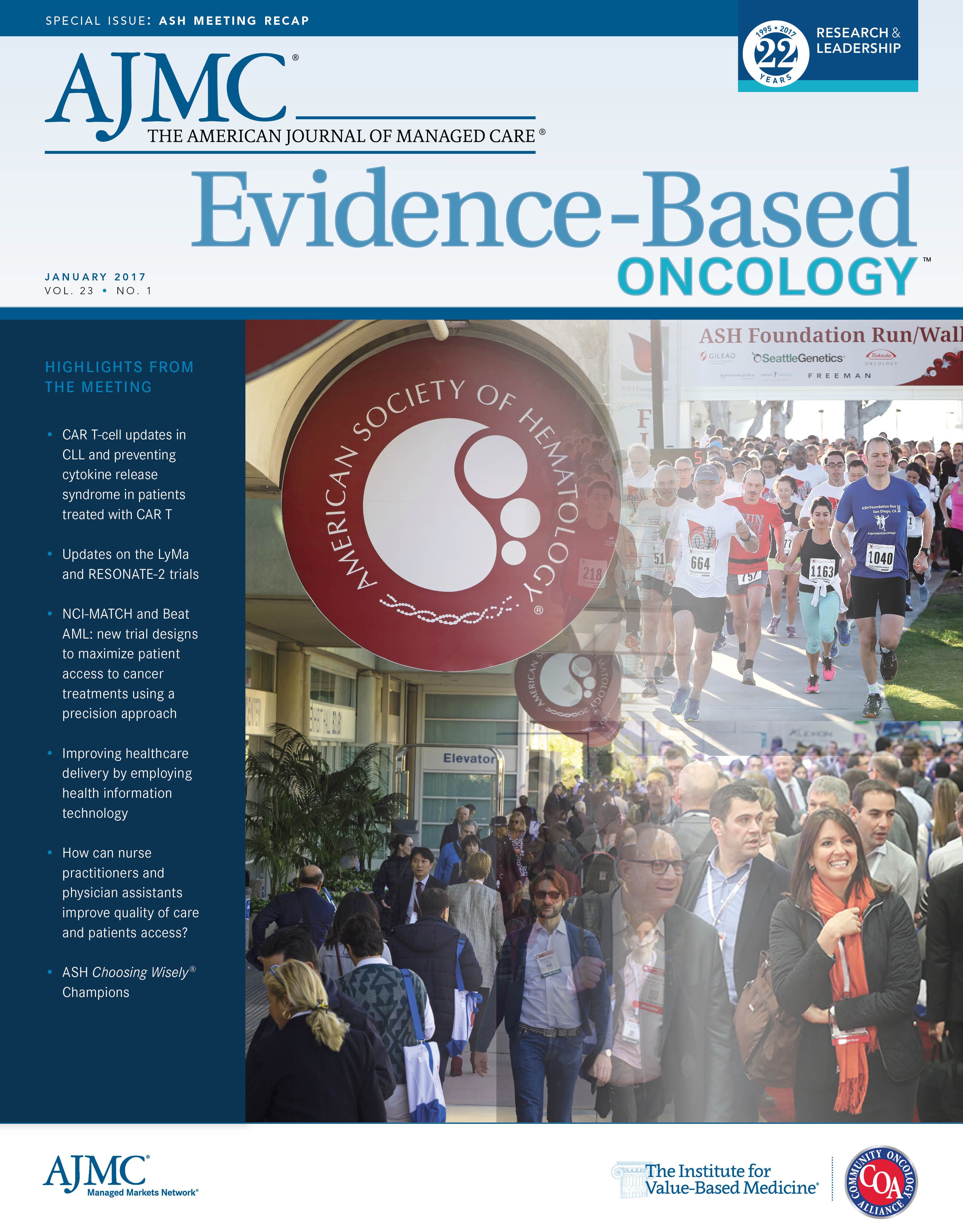- Center on Health Equity & Access
- Clinical
- Health Care Cost
- Health Care Delivery
- Insurance
- Policy
- Technology
- Value-Based Care
Phase 3 LyMa Trial: Rituximab After ASCT Increases OS in Mantle Cell Lymphoma
Phase 3 results from the LyMa trial have shown that rituximab, after autologous stem cell transplant (ASCT), prolongs event-free survival, progression-free survival, and overall survival (OS) in previously untreated young patients with mantle cell lymphoma (MCL) following ASCT.
MINIMAL RESIDUAL DISEASE
is a major cause of relapse in patients treated for mantle cell lymphoma (MCL), which is a less common form of non-Hodgkin’s lymphoma. While maintenance therapy with rituximab (RM) following R-CHOP (rituximab, cyclophosphamide, doxorubicin, hydrochloride, vincristine sulphate, and prednisone) has been shown to improve overall survival (OS) in older patients, its impact on OS in young patients following autologous stem cell transplant (ASCT) has not yet been evaluated.
Now, phase 3 results from the LyMa trial have shown that RM after ASCT prolongs event-free survival (EFS), progression-free survival (PFS), and OS in previously untreated young patients with MCL following ASCT. The results were presented during a session, Therapeutic Approach to Mantle Cell Lymphoma, by Steven Le Gouill, MD, PhD, from the Department of Hematology, Nantes University Hospital and UMR892 INSERM, of Nantes, France, at the 58th American Society of Hematology Annual Meeting & Exposition, held December 3-6, in San Diego, California. Le Gouill said that this was the first time that the final results of the LyMa trial were being shared.
Between September 2008 and August 2012, the trial enrolled 299 treatment-naïve individuals diagnosed with MCL. Inclusion criteria included diagnosis of MCL, presence of the t(11;14) translocation, untreated patients with MCL with at least 1 tumor site for assessment, aged between 18 and 65 years, and informed consent to participate in the trial. Patients were excluded from participation if they were diagnosed with another type of lymphoma besides MCL, if they were in relapse, positive for HIV or hepatitis B or C, or had uncontrolled diabetes.
Induction immuno-chemotherapy consisted of 4 courses of R-DHAP (rituximab, dexamethasone, highdose cytarabine, and salt platinum) every 21 days, followed by ASCT consolidation. Of the 277 patients who received 4 courses of R-DHAP and 20 who received R-CHOP, 257 underwent ASCT. Patients who did not respond after R-DHAP received 4 additional courses of R-CHOP-14 before ASCT (n = 20). The conditioning regimen for ASCT was R-BEAM (rituximab, BICNU, etoposide, ara-C, and melphalan). Patients who responded to ASCT were randomized to receive RM (1 infusion of 375 mg/m2 every 2 months for 3 years) or not (120 in each cohort).
Of the 257 patients who responded to ASCT, 240 were then randomized (1:1) to receive RM or not. The median follow-up was 54.4 months after inclusion (range, 52.7-59.2) and 50.2 months after randomization (range, 46.5-54.2). The primary endpoint was EFS, calculated from the time of randomization, with events defined as disease progression, relapse, death, severe infection, or allergy to rituximab. Secondary endpoints were PFS and OS from time of diagnosis and time of randomization.
The 4-year PFS was 67.8% (95% CI, 62.1%-72.8%) and OS was 78% (95% CI; 72.8-82.3). According to the EFS definition, 47 (39.2%) patients had an event in the no RM versus 25 (20.8%) in the RM arm. The median EFS from randomization was not reached in either arm. The 4-year EFS was 61.4% (95% CI, 51.3%69.9%) in the no RM arm versus 78.9% (95% CI, 69.6%-85.6%) in the RM arm (P = .0012). The EFS duration was significantly superior in the RM arm, with a 54.3% reduction in the risk of event (HR, .457; 95% CI, 0.28-0.74; P = .0016). The median PFS and OS from randomization were not reached in both arms. The 4-year PFS from randomization was higher in the RM arm: 82.2% (95% CI, 73.2%-88.4%) versus 64.6% (95% CI, 54.6%-73%; P = .0005), as was the 4-year OS: 88.7% (95% CI, 80.7-93.5) versus 81.4% (95% CI, 72.3%-87.7%; P = .0413). Patients in the RM arm had a 60% reduction of risk of progression (HR, 0.4; 95% CI, 0.23%-0.68%; P = .0007) and a 50% reduction in risk of death (HR, 0.5; 95% CI, 0.25-0.98; P = .0454).
Based on their trial results, Le Gouill concluded, “A rituximab maintenance dose of 375 mg/m2 every 2 months for 3 years is recommended in transplanted MCL patients.” REFERENCE
Le Gouill S, Thieblemont C, Oberic L, et al. Rituximab maintenance after ASCT prolongs survival in younger patients with mantle cell: phase 3 LyMa trial of the Lysa/Goelams group. Presented at: 58th American Society of Hematology Annual Meeting & Exposition; December 3, 2016; San Diego, CA. Abstract 145.

Trends in Hospital Pricing for Vulnerable Emergency Department Users, 2021-2023
December 4th 2025Self-pay emergency department prices rose significantly from 2021 to 2023, especially at for-profit and system-affiliated hospitals, highlighting growing affordability challenges for uninsured and underinsured patients.
Read More

